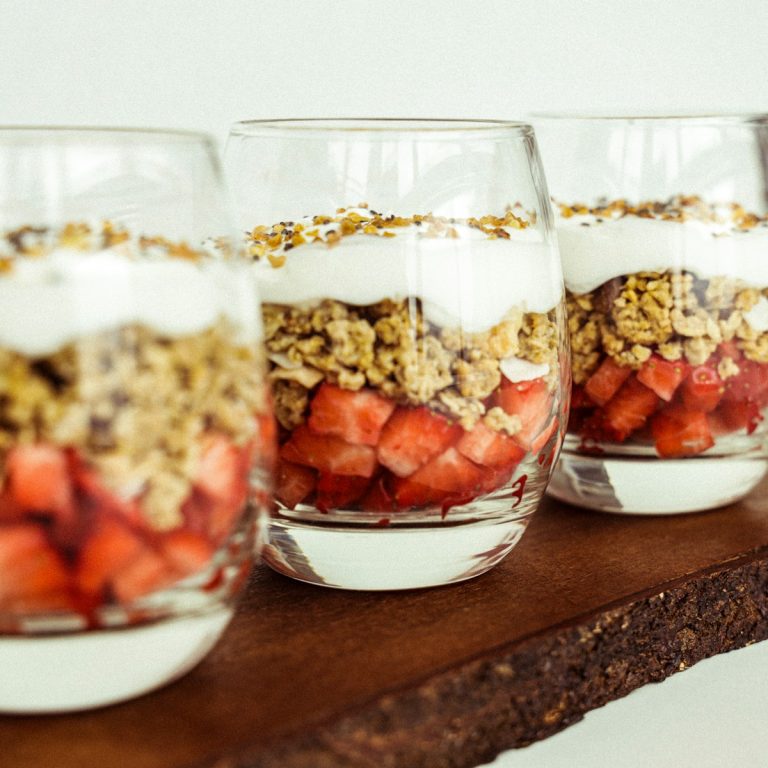The Best Fluffy Pancakes recipe you will fall in love with. Full of tips and tricks to help you make the best pancakes.
As parents, we all want the best for our children, especially when it comes to their health and nutrition. But let’s be real: juggling work, school schedules, extracurricular activities, and everything in between, can make it feel nearly impossible to provide nutritious meals all the time. On top of that, there’s the convenience factor of ultra-processed foods, the sneaky presence of hidden sugars, and insufficient protein and fiber in our kids’ diets. But don’t worry; we’ve got some practical strategies to help you build a better nutrition plan for the little ones!

The Convenience Trap: Ultra-Processed Foods
We live in a world where convenience often trumps nutrition. Ultra-processed foods—think sugary cereals, packaged snacks, and frozen dinners—are everywhere and can be super tempting. They’re often cheap and easy to grab on a busy morning or after a long day. The problem is, these foods tend to be low in essential nutrients and high in unhealthy fats, sugars, and sodium.
Strategies:
- Plan Ahead: Create a weekly meal plan, and prep meals ahead of time. Involving your kids in the planning process can make them more excited about the meals you’ll prepare together!
- Healthy Convenience Alternatives: Stock up on easy-to-grab snacks that are wholesome. Look for pre-cut fruits and veggies, nut butters, yogurt, and whole-grain crackers. These take no time to prepare but are loaded with nutrients.
- Cook in Batches: On weekends, batch-cook meals like chili, soups, and healthy mac and cheese. Portion them out for the week so you’re not resorting to ultra-processed options when things get hectic.
Hidden Sugars Are Sneakier Than You Think
You might be shocked to learn just how much sugar is hiding in common foods marketed for kids—like yogurt, sauces, and even bread. These sneaky sugars can contribute to energy spikes and crashes, making your child feel irritable and craving more sugar.
Strategies:
- Read Labels: Get in the habit of checking ingredient labels with your kids. The goal is to look for added sugars lurking in unexpected places. Aim for options with little to no added sugars.
- Make Your Own Sauces and Dressings: Honey mustard, barbecue sauce, and even pizza sauce can have a ton of added sugar. Try making your own with whole-food ingredients. Your kids might even enjoy experimenting in the kitchen!
- Reduce Sugar Gradually: Don’t try to eliminate sugar completely overnight. Start by reducing the amount you use in recipes or drinks. Gradually swap sugary yogurts for plain Greek yogurt with fresh fruit or honey on top.
Lack of Protein and Fiber Intake
A balanced diet isn’t just about avoiding sugar; it’s important to ensure that kids are getting enough protein and fiber as well. Protein helps build and repair tissues while fiber aids in healthy digestion. Many kids—especially picky eaters—struggle to get these essential nutrients.
Strategies:
- Smoothie Time: Blend up some delicious smoothies packed with greens, fruits, and a protein source like Greek yogurt or nut butter. You can sneak in things like spinach or avocado without them even noticing!
- Fiber-Rich Snacks: Swap out regular chips and cookies for snacks rich in fiber—think popcorn, trail mix with nuts and seeds, or apple slices with peanut butter. These will keep them full longer and reduce sugary cravings.
- Introduce Diverse Proteins: Try varying your proteins beyond chicken nuggets or fish sticks. Offer tofu, legumes, turkey, or even quinoa. Make protein fun by letting kids help in the cooking process or by presenting it in interesting shapes!
Crafting an Ingredient-Packed Pantry and Fridge
Creating a kid-friendly pantry and fridge starts with stocking up on healthy ingredients that are both versatile and easy to use. This not only makes meal prep easier but also helps foster their love for cooking.
Strategies:
- Go Grocery Shopping Together: Take your kids grocery shopping and encourage them to pick out new fruits, vegetables, and other healthy foods. This will give them a sense of ownership in the meals prepared at home.
- Organize Smartly: Keep healthy snacks at eye level to promote healthier choices. Store fruits in a bowl on the countertop and designate a “healthy snack” shelf in your pantry.
- Have Fun with Storage: Use clear containers to store whole grains, seeds, nuts, and dried fruits. Not only is it visually appealing, but it also makes it easy for your kids to see what they have to work with.
Low-Sugar and Simple Carb Snacks and Meals
Instead of reaching for chips or candy, get creative with low-sugar and simple carb snacks and meals. These will keep your kids satisfied without the sugar rush.
Strategies:
- Veggie Sticks and Dips: Carrot and cucumber sticks with hummus or guacamole make for a colorful, crunchy treat. Getting hands-on with dipping can be a fun experience!
- Fruit Popsicles: Blend fruit and yogurt together to create your own popsicles. Freeze them in fun molds for a refreshing treat that’s low in sugar.
- Mini Wraps: Use whole-grain tortillas, spread some avocado or hummus, add turkey or beans, roll them up, and slice them into pinwheels. They’re fun to eat and easy to prepare!
Alternatives to Sugary Fizzy Drinks
Sugary drinks can be a major source of hidden sugars for kids. Thankfully, there are healthier alternatives that are equally refreshing!
Strategies:
- Infused Water: Fill a pitcher with water and let your kids add their favorite fruits and herbs—think strawberries and mint or lemon and cucumbers. It’s a colorful, flavorful way to promote hydration.
- Sparkling Water with a Twist: If they love fizzy drinks, try carbonated water with a splash of 100% fruit juice. This gives the fizz they crave without all the added sugar.
- Homemade Lemonade: Make fresh lemonade by squeezing real lemons and sweetening it with a natural sweetener or reducing the amount of sugar. Experiment with different fruits for unique flavors.
Building a better nutrition plan for your kids doesn’t have to be overwhelming. By tackling ultra-processed foods, hidden sugars, and insufficient protein and fiber, you’ll be setting your children on the path to healthy eating habits for years to come. Remember, it’s all about balance and fun! So, roll up your sleeves and get creative with meal prep—your kids’ taste buds (and health) will thank you!





